FUNDAMENTAL OF COMPUTER

Introduction of Computer:- The world computer comes from the world "Compute" which means to calculate. Hence a computer is normally considered to be a calculating device. which can perform arithmetic operation at high speed.
A computer is a electronic device It's also called as a data processor or main processor.
Characteristics of Computer :-
- Automatic:- A computer are automatic machine.
- Speed:- A computer is very fast device. It's can perform in a few seconds.
- Accuracy:- A computer are very accurate.
- No IQ :- A computer is not magical device .It's has No IQ means It's IQ is zero.
- No Feeling:- A computer has no emotion also they have No feel.
Generation of Computer
- They were the fastest calculating devices of their time.
- They were too bulky in size.
- They used thousand of vacuum tubes.
- vacuum tubes used filaments.
- These computer were difficult to program and used .
- They were more faster than the first generation computer .
- They were smaller than first generation computer.
- They were less expensive than first generation computer.
- They were more reliable than the first generation computer.
- They were easier to program and used.
- They were more faster than the second generation computer .
- They were smaller than second generation computer.
- They were more faster than second generation computer.
- They were more reliable than the second generation computer.
- They were general purpose machine computer.
- The PCs smaller than third generation computer .
- They consumed less power than the third generation computer.
- They were more faster than third generation computer.
- They had faster storage third generation computer.
- Graphical User Interface(GUI) added to provide new features..
- They are much smaller .
- PCs are also called notebook computer.
- They are more faster and more reliable.
- They are consumed less power.
- They are general purpose machine.
Input Devices :-
Input Unit contains the input devices like as scanner, joystick, keyboard, mouse, etc. These input devices allow to user for inserting the instruction or information into the computer system. Input unit plays the role as a mediator of communication that gets the data from user to the computer system for organized manner for processing.
Central Processing Unit:-
CPU is also called the “Brain” or “Heart” of the computer system. CPU is a hardware electronic device that is capable to perform various types of operations like as arithmetic and logical operation. It has ability to perform all calculations, comparisons or operations inside of the CPU.
Arithmetic and Logic Unit :-
ALU (Arithmetic logic unit) has responsible to perform all arithmetic and logic operations, which are data inserted via input devices, is stored in the main memory storage unit.
Control Unit:-
The control unit (CU) deals to perform all activities and operations of computer inside the CPU. Control unit has a responsible to control input/output, memory, and other devices which are linked to CPU.
Memory Unit :-
Memory unit also plays the major role in the computer system because it helps to store data and instructions before and after processing.
Memory Unit is divided into two categories like as –
Primary Memory: Primary memory is known as “Main Memory” or “Internal Memory” or “Primary Storage Device” or “Internal Storage Device” as well as they play vital role in computer, because those memories are capable to access all data directly from CPU with the help of various buses. These memories have limited capacity for storage and made by integrated circuits (IC) or semiconductor components.
Primary storage devices are available in two variance such as volatile and non volatile. Volatile memory is called temporary memory because all data deleted when power get turn off mode but its access time and response time much fine to secondary memory. Non volatile memory is permanent memory in which nothing data erase when system is turn off.
Secondary Memory: Secondary Memory is also called “storage device” and “auxiliary memory“, “external memory“. Secondary storage devices are volatile in nature, it means that data does not discard while power turn-off, in which all data store for long time. Secondary memory has the speed of access of data is very slow compare to primary memory, and cheaper as well. Without primary memory, those secondary storage devices are useless because for processing the secondary memory must be needed the primary memory, first of all data are transferred into primary memory then these data make for executable.
Output Devices:-
The output unit of the computer system delivers the results of computation and displaying the output outside the world. The output unit generally works as the opposite process of the input unit and it convert the binary language digitalized information to electronic impulses, which are readable to the output devices. There are few output devices, which are commonly used like as moniter, projector, headphone, speaker, etc.
Input Devices:-
An input device is a piece of hardware used to provide data to a computer used for interaction and control. It allows input of raw data to the computer for processing.
Keyboard: –
Keyboard is the most common and very popular input device which helps to input data to the computer. The layout of the keyboard is like that of traditional typewriter, although there are some additional keys provided for performing additional functions.
Keyboards are of two sizes 84 keys or 101/102 keys, but now keyboards with 104 keys or 108 keys are also available for Windows and Internet.
Mouse – Mouse is the most popular pointing device. It is a very famous cursor-control device having a small palm size box with a round ball at its base, which senses the movement of the mouse and sends corresponding signals to the CPU when the mouse buttons are pressed.
Generally, it has two buttons called the left and the right button and a wheel is present between the buttons. A mouse can be used to control the position of the cursor on the screen, but it cannot be used to enter text into the computer.
Joystick – Joystick is also a pointing device, which is used to move the cursor position on a monitor screen. It is a stick having a spherical ball at its both lower and upper ends. The lower spherical ball moves in a socket. The joystick can be moved in all four directions. The function of the joystick is similar to that of a mouse. It is mainly used in Computer Aided Designing(CAD) and playing computer games.
Digital Camera: –
- LCD screen – allows users to view the photos and videos immediately
- Storage – can store thousands of pictures
- Picture development – allows users to choose and pick which pictures to develop
- Size – takes up less space and can be easily carried
Scanner:-
Scanner is an input device, which works more like a photocopy machine. It is used when some information is available on paper and it is to be transferred to the hard disk of the computer for further manipulation.
Scanner captures images from the source which are then converted into a digital form that can be stored on the disk. These images can be edited before they are printed.Light Pen:-
Light pen is a pointing device similar to a pen. It is used to select a displayed menu item or draw pictures on the monitor screen. It consists of a photocell and an optical system placed in a small tube. When the tip of a light pen is moved over the monitor screen and the pen button is pressed, its photocell sensing element detects the screen location and sends the corresponding signal to the CPU.
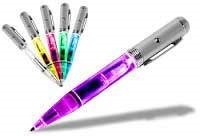
Track Ball :-
Track ball is an input device that is mostly used in notebook or laptop computer, instead of a mouse. This is a ball which is half inserted and by moving fingers on the ball, the pointer can be moved. Since the whole device is not moved, a track ball requires less space than a mouse. A track ball comes in various shapes like a ball, a button, or a square.
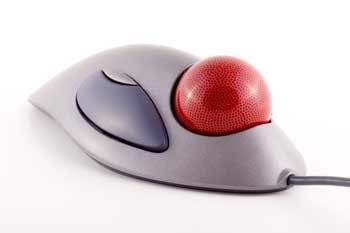
Digitizer:-
Digitizer is an input device which converts analog information into digital form. Digitizer can convert a signal from the television or camera into a series of numbers that could be stored in a computer. They can be used by the computer to create a picture of whatever the camera had been pointed at. Digitizer is also known as Tablet or Graphics Tablet as it converts graphics and pictorial data into binary inputs. A graphic tablet as digitizer is used for fine works of drawing and image manipulation applications.
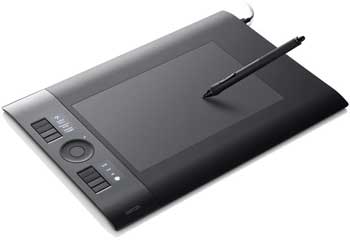
Microphone:-
Microphone is an input device to input sound that is then stored in a digital form.
The microphone is used for various applications such as adding sound to a multimedia presentation or for mixing music.

Magnetic Ink Card Reader (MICR)-
MICR input device is generally used in banks as there are large number of cheques to be processed every day. The bank's code number and cheque number are printed on the cheques with a special type of ink that contains particles of magnetic material that are machine readable. This reading process is called Magnetic Ink Character Recognition (MICR). The main advantages of MICR is that it is fast and less error prone.
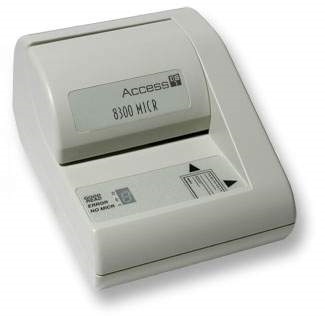
Figure :- Magnetic Ink Card Reader
Optical Character Reader (OCR)
OCR is an input device used to read a printed text. OCR scans the text optically, character by character, converts them into a machine readable code, and stores the text on the system memory.
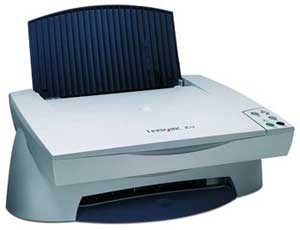
Figure :- Optical Character Reader(OCR)
Bar Code Readers:-
Bar Code Reader is a device used for reading bar coded data (data in the form of light and dark lines). Bar coded data is generally used in labelling goods, numbering the books, etc. It may be a handheld scanner or may be embedded in a stationary scanner.
Bar Code Reader scans a bar code image, converts it into an alphanumeric value, which is then fed to the computer that the bar code reader is connected to.
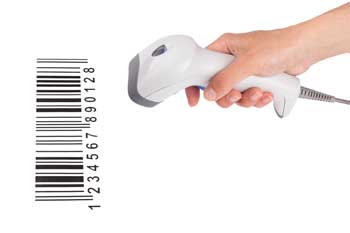
Figure:-Bar Code Reader
Optical Mark Reader (OMR)-
OMR is a special type of optical scanner used to recognize the type of mark made by pen or pencil. It is used where one out of a few alternatives is to be selected and marked. It is specially used for checking the answer sheets of examinations having multiple choice questions.
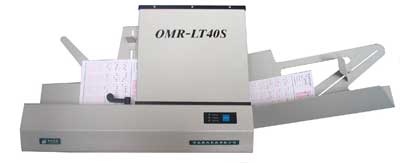
Output Devices:-
Output devices are pieces of computer hardware used to communicate the results of data processing performed by a computer.
- Monitor :-A computer monitor is an output device that displays information in pictorial or text form. A monitor usually comprises the visual display, circuitry, casing, and power supply
- Printer :-A printer is a device that accepts text and graphic output from a computer and transfers the information to paper, usually to standard-size, 8.5" by 11" sheets of paper. Printers vary in size, speed, sophistication and cost. The best-known non-impact printers are the inkjet printer and the laser printer.
- Plotter:- Plotters are used to print graphical output on paper. • It interprets computer commands and makes line drawings on paper using multicolored automated pens. It is capable of producing graphs, drawings, charts, maps etc.
- Speaker :-A computer speaker is an output hardware device that connects to a computer to generate sound. The signal used to produce the sound that comes from a computer speaker is created by the computer's sound card.
Definition :-Software is a set of programs, which is designed to perform a well-defined function. A program is a sequence of instructions written to solve a particular problem.
There are two types of software −
- System Software
- Application Software
System Software
The system software is a collection of programs designed to operate, control, and extend the processing capabilities of the computer itself. System software is generally prepared by the computer manufacturers. These software products comprise of programs written in low-level languages, which interact with the hardware at a very basic level. System software serves as the interface between the hardware and the end users.
Some examples of system software are Operating System, Compilers, Interpreter, Assemblers, etc.

Here is a list of some of the most prominent features of a system software −
- Close to the system
- Fast in speed
- Difficult to design
- Difficult to understand
- Less interactive
- Smaller in size
- Difficult to manipulate
- Generally written in low-level language
Application Software
Application software products are designed to satisfy a particular need of a particular environment. All software applications prepared in the computer lab can come under the category of Application software.
Application software may consist of a single program, such as Microsoft's notepad for writing and editing a simple text. It may also consist of a collection of programs, often called a software package, which work together to accomplish a task, such as a spreadsheet package.
Examples of Application software are the following −
- Payroll Software
- Student Record Software
- Inventory Management Software
- Income Tax Software
- Railways Reservation Software
- Microsoft Office Suite Software
- Microsoft Word
- Microsoft Excel
- Microsoft PowerPoint

Features of application software are as follows −
- Close to the user
- Easy to design
- More interactive
- Slow in speed
- Generally written in high-level language
- Easy to understand
- Easy to manipulate and use
- Bigger in size and requires large storage space
Examples of Hardware are the following −
Input devices − keyboard, mouse, etc.
Output devices − printer, monitor, etc.
Secondary storage devices − Hard disk, CD, DVD, etc.
Internal components − CPU, motherboard, RAM, etc.
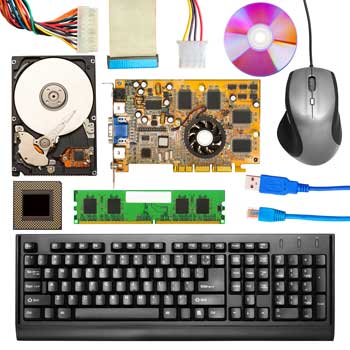





























0 Comments